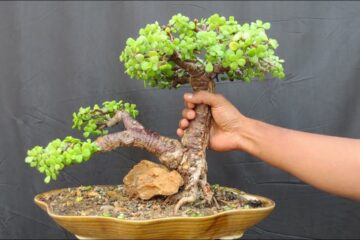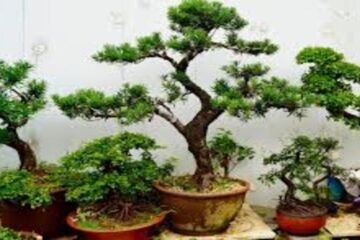Have you been cultivating bonsai plants and aquarium fish separately for many years?
If so, then creating bonsai driftwood for aquarium might be an excellent idea for you. But you don’t know; How to make bonsai driftwood for aquarium?
Then you are visiting the right site. This article will show you 9 easy steps to make your own driftwood for aquarium. Please stay with us, here we will see how to make bonsai driftwood for aquarium?
How To Make Bonsai Driftwood for Aquarium?
Content Overview
You can make your own bonsai driftwood for aquarium tree by following a few simple steps. Let’s have an overview of the steps.
- Collect dry wood
- Cut wood and soak them
- Peel the Barks
- Sterilize The Woods
- Sanding the Woods
- Bond each piece of wood
- Bond driftwood on the stone
- Making leaves
- Place Driftwood in the Aquarium
We know that it is very difficult to follow the steps without knowing the details. So it’s time to learn them in detail.
Step 1: Collect dry wood
You have to collect floating aquatic plant branches of different sizes from lakes, rivers or streams. If floating dry wood is difficult to collect, you have an alternative option. There are some trees, some wood you can use for this. But yes, you have to burn some extra energy to float them.
Read More :How to Mimosa Tree Grow and Care Beginners Ultimate Solution
List of safe woods for freshwater aquariums
- Mango
- Pears
- Alder
- Cherry
- Guava
- Oak
- Hawthorns
- Sycamore
- Indian almonds
- Apple
- Birch
- The beach
List of unsafe woods for freshwater aquariums
- the pine
- Walnut
- Spruce
- Cypress
- Horse Chestnut
- Yew (as it is poisonous)
- Lilac (as it is poisonous)
- Ivy (as it is poisonous)
- Vine (as it rots very quickly)
You need to choose wood that is safe for the aquarium water chemistry and will not harm the fish.
Step 2 :Cut wood and Soak them
After collecting pieces of driftwood, you need to cut their thin branches with bonsai scissors or scissors. Because they are not suitable for making bonsai driftwood for aquarium. Then soak the branches and make sure they are completely submerged in water. You can add a heavyweight on the wood.
Soak them for 2-4 weeks and by this time, the outer layer of the branches will be soft enough to remove the bark. The tannins will each the water to soak and make the wood safe for aquarium water. You should change the old soaking water every week and replace the branches with new water.
Step 3: Peel the Barks
After 2-4 weeks, you will see bark coming from the forest. Peel off all the bark; You can take a knife to peel off the sharp corners of the bark. Now, they will look fresh.
Step 4: Sterilize the Woods
Now the wood has to be made safe for fish. You can do this by following two methods. One is applying liquid carbon, and the other is boiling wood.
For the first method, apply liquid carbon dioxide with a paintbrush to all wood parts to kill as many bacteria, fungi, spores and algae as possible.
For the second method, put a large saucepan with water on the stove and put it on fire. Now soak the wood in the saucepan and boil for 1-2 hours to sterilize. If the whole wood cannot be soaked, boil one section first and then the next section.
Step 5: Sanding the wood
Sanding is an essential part of roughening any surface and this roughness helps hold the joint efficiently. You can take a small piece of wood sandpaper and rub it gently on the wood where you need to bond them. You can sand an area for 2-5 minutes to roughen the area.
Step 6: Bond each piece of wood
Before gluing several pieces of wood together, try to visualize the design of your bonsai driftwood for aquarium. You can draw the design on paper to execute your plan properly. Here you can also follow two methods, one using drill and nails and the other using wood or epoxy glue. However, you can use both to make your driftwood bonds last longer.
Using a drill and nails, you first need to make a small hole where you want to add another piece of wood with the drill machine. Now, the other pieces of wood need to be anchored with nails. . Nails will hold the two pieces together.
Using wood glue is much easier, faster and cheaper than nailing. You need to put 1-2 drops of wood glue on the first piece of wood and hold the second piece on the glue for a few seconds. During this time, the glue will dry and form a permanent bond between them. Since the wood glue is waterproof, there is no chance of losing the bond when set in the aquarium.
Step 7: Bond Driftwood to Stone
After attaching all the pieces of dry wood, your driftwood preparation is complete. But because there is no bonsai soil in its lower part. So you need to tie a small piece of stone to it to enable it to stand alone. You can use the rock you already have in your aquarium.
Bring one or two pieces of rock depending on how much bonsai driftwood for aquarium you make. Now apply super glue to the stone and hold the bottom of the driftwood in place. Within seconds, it will offer you a permanent bond. But you have to wait for 24 hours for complete healing.
Step 8 – Making leaves
Your bonsai driftwood looks awkward and artificial without leaves. So you need to attach leaves to each branch of bonsai driftwood for aquarium. Using moss is one of the best options for creating foliage that looks natural as it is green. You will find different types of moss in the market; You can use Christmas moss, Marimo moss and Java moss.
First, you need to expose them to create leaves with moss. Then attach a ball of moss to each branch of your driftwood with super glue. When you have completed tying all the leaves on each branch, your driftwood will look absolutely amazing and will be perfect for keeping in the aquarium.
Step 9: Place the driftwood in the aquarium
Finally, you’ve reached your cherished moment and that’s placing your driftwood in the aquarium. Open the lid of the aquarium, carefully place the driftwood and close the lid.
Now, when you turn on the aquarium light switch and the fish swim around the bonsai driftwood for aquarium, it looks like a bayonet.
Conclusion
Finally, we come to the last note of our discussion on how to grow bonsai driftwood for aquarium. Hope, you enjoyed the article and learned the steps.
So why the delay? Start collecting your bonsai driftwood for aquarium materials and create driftwood to add beauty to your home. Oh, yes, don’t forget to share your experience with us by leaving a comment in our comment section. We would love to hear from you.
Related Articles:



